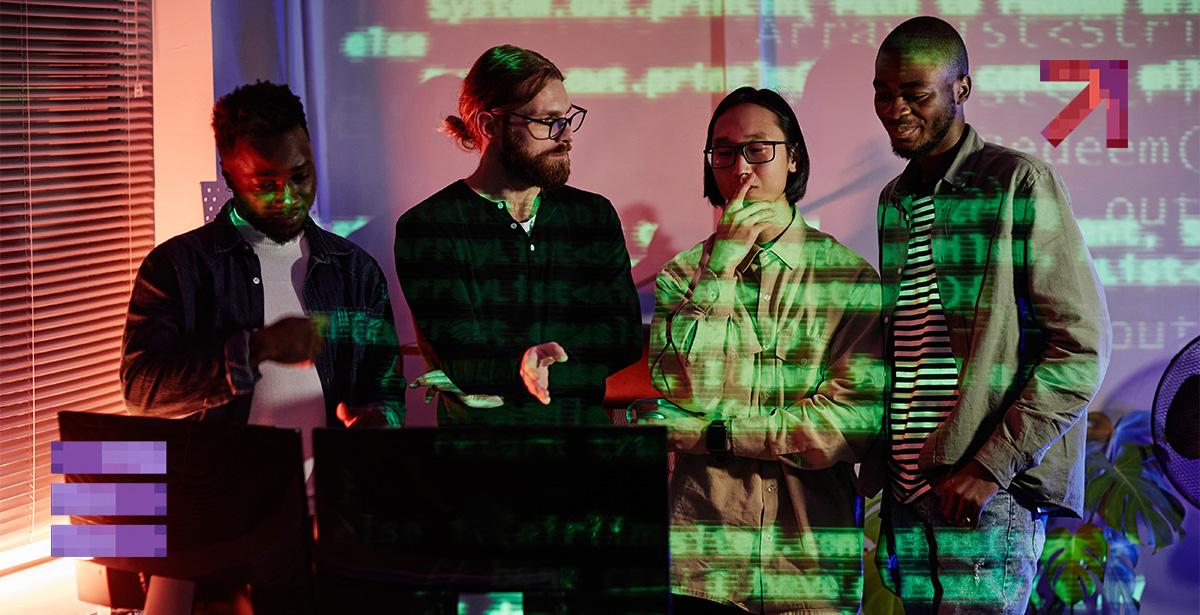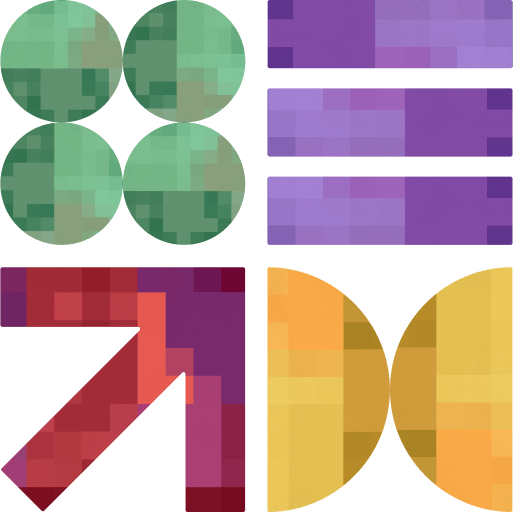Software Development Team Augmentation vs Technology Consulting vs Dedicated Teams

Tech talent is harder to secure than ever before. The World Economic Forum further confirms this, reporting that 63% of organizations can’t fill critical IT roles through direct hiring.
Whether it’s AI specialists, cloud engineers, or cybersecurity experts, this shortage slows projects, stalls innovation and weakens competitiveness.
That’s why more businesses are turning to external support models. But not all models are equal. Some help you move faster, others sharpen your strategy, and a few deliver long-term continuity.
The key is knowing which one truly fits your business.
With that in mind, let’s get you formally introduced to the three most widely used approaches: software development team augmentation, technology consulting, and dedicated teams.
What is Software Team Augmentation?
Think of staff augmentation as plug-and-play talent.
It’s a resourcing strategy that allows organizations to extend their in-house development capacity by hiring skilled professionals from external vendors. These professionals are integrated into the company’s existing teams and processes, working under your organization’s direct supervision.
The model is designed to provide on-demand access to specialized expertise, such as artificial intelligence, cloud engineering, or cybersecurity. It eliminates the time and expense of hiring permanent employees.
Moreover, it’s useful for businesses that want to stay agile, tap into niche skills, and adjust workforce capacity in response to evolving project needs.
💡 Pro Tip! Don’t treat technical staff augmentation as a quick fix. Skipping clear communication, role definitions, or security protocols can turn your augmented team into a liability instead of an asset. Learn the dos and don’ts of software development team augmentation, starting with aligning expectations early to prevent costly mistakes down the road.
What is Technology Consulting?
Technology consulting focuses on helping organizations make informed technology decisions to achieve growth, innovation, and transformation.
They act as advisors, providing the technical and strategic insight needed to help businesses reduce risks, adopt emerging technologies effectively.
So, they’ll analyze your existing systems, processes, and goals, and then design strategies to improve efficiency, scalability, and competitiveness. This can include modernizing legacy systems, guiding cloud migration, and designing digital transformation initiatives.
Basically, everything they do aims to maintain alignment between technology and business strategy.
What is Dedicated Teams?
The dedicated team model provides organizations with an external team of professionals.
It often includes developers, QA engineers, designers, and project managers who are committed exclusively to a single client’s project.
Unlike the software development team augmentation model, a dedicated team operates as a long-term extension of the client’s organization.
This approach is designed for businesses that require sustained development capacity, product-focused collaboration, and consistent knowledge retention.
Since the team works only on one client’s initiatives, they gain a deep domain understanding. This, in turn, makes them highly effective for complex, ongoing projects where continuity and expertise are critical.
💡 Want to get the most out of a dedicated development team? It’s not just about hiring skilled professionals; it’s about managing them the right way. Check out our guide to effectively manage a dedicated development team and learn how to build collaboration, boost productivity, and drive long-term success.
Comparing the Staff Augmentation Model, Tech Consulting, and Dedicated Teams
Choosing the right model isn’t just about cost. It’s about how much control you want, how fast you need to move, and how much risk you are ready to share.
Here is a breakdown of the big factors that often tip the scale.
1) Control and Decision-Making
With staff augmentation, you remain in full control. External developers join your internal workflows, but the direction of the project, backlog management, and decision-making all stay with you.
Augmentation works best if you already have strong internal leadership, such as experienced project managers or engineering managers, and just need additional hands on board.
Technology consultants, on the other hand, can define the architecture and propose the best way forward. But don’t expect them to manage the daily execution of tasks.
As for the dedicated team model, the control is shared. The vendor manages the day-to-day operations of the external team, but you collaborate on priorities and high-level decisions. That way, external accountability remains balanced with internal oversight.
2) Cost Models
The way costs are structured varies significantly between the three models.
With software development team augmentation, you typically pay per developers or per hour. This makes it highly flexible, as you only pay for the resources you use. However, it also requires close oversight to ensure productivity and prevent costs from escalating.
Meanwhile, technology consulting often involves higher upfront fees for assessments, strategic planning, and system design. That said, despite significant initial expenses, the long-term ROI comes from fewer mistakes and the adoption of the right technologies.
Finally, dedicated teams generally work on a monthly or retainer-based model. You pay a predictable fee for a team that’s focused exclusively on your project. This stability makes it easier to manage budgets, especially for long-term initiatives.
3) Ramp-Up Speed
Time-to-market is a critical factor in technology projects.
With staff augmentation, ramp-up is usually the fastest. Skilled developers can be onboarded in a matter of weeks, allowing you to quickly address capacity gaps or hit urgent deadlines.
Similarly, technology consulting engagements can move quickly during the discovery and assessment phase. However, actual execution often takes longer because it requires alignment across stakeholders, approval cycles, and sometimes new infrastructure setup.
As for dedicated teams, they’ll require more time at the beginning. Since they operate as a self-contained unit, onboarding involves aligning workflows, processes, and communication standards. But once established, the team will deliver consistently.
4) Security and Compliance
Security responsibilities differ across these models.
In the case of software development team augmentation, the burden of security falls primarily on the client. Your organization must ensure that proper access controls, non-disclosure agreements, and compliance protocols are in place.
Technology consulting focuses on helping you design secure systems and recommending compliance frameworks. However, consultants aren’t always responsible for daily security operations or ongoing monitoring.
Dedicated teams, on the other hand, typically share responsibility for security with you. The vendor’s internal practices (e.g. how they manage data and compliance certifications) play a crucial role in ensuring security and governance.
5) Risk and Accountability
In staff augmentation, the delivery risk remains with your organization. Vendors guarantee that the right talent is provided, but the outcomes of the project depend on your management.
With technology consulting, risk shifts toward the consultant. They’re responsible for providing accurate recommendations, strategies, and designs. If their advice proves ineffective, the accountability rests on them.
Alternatively, risk is shared in the dedicated team model. Vendors often sign service-level agreements (SLAs) that cover performance, delivery timelines, and quality metrics, ensuring accountability on both sides.
💡 Choosing the right development partner can make or break your project. Before moving forward with a dedicated team or software development team augmentation, be clear on what to evaluate, from skills and workflows to communication practices. That way, you can avoid costly mistakes when selecting custom software development services.
6) Knowledge Retention
Knowledge continuity is often overlooked but has long-term consequences.
Staff augmentation can result in knowledge gaps. Since external staff members aren’t permanent, they may leave with valuable project knowledge once their contract ends.
Technology consultants typically transfer their insights through reports, documentation, or workshops. Once their engagement ends, knowledge retention depends on how well the internal team absorbs it.
Meanwhile, dedicated teams are designed for ongoing collaboration. They remain on the project for extended periods, accumulating domain knowledge and becoming long-term experts of the product.
7) Flexibility versus Predictability
Software development team augmentation provides the highest flexibility. You can scale your workforce up or down quickly based on project demands.
Technology consulting also offers flexibility during the planning and advisory stages. However, once a contract or scope of work is signed, the room for changes becomes more rigid.
On the other hand, dedicated teams provide the most predictability. They deliver steady capacity and output, which is excellent for long-term planning. The trade-off is that they’re not as quick to adjust to sudden changes in scope.
8) Vendor Lock-In
With staff augmentation, vendor lock-in is minimal. Developers can roll off the project at any time. And your internal team can pick up with minimal disruption, provided knowledge transfer is well managed.
Technology consulting comes with moderate lock-in. Some consulting firms rely on proprietary frameworks or methodologies that may make it harder to switch providers. Thankfully. ensuring clear ownership of deliverables and processes reduces this risk.
Dedicated teams have the highest potential for vendor lock-in because of their deep integration with your project. However, this dependency comes with benefits such as faster delivery, continuity, and fewer handovers.
💡 Even with the backing of a leading IT staff augmentation company, your success ultimately relies on how effectively you onboard new team members. That’s why you need to effectively onboard your chosen IT staff augmentation service to ensure a smooth integration process and get your projects moving at full speed from day one.
Whether You Need Dedicated Teams or Staff Augmentation Services in USA…
For over two decades, DPL has empowered U.S. businesses with scalable staff augmentation solutions.
Our engineers specialize in cloud, AI, IoT, FinTech, and enterprise software, integrating seamlessly with your in-house teams. Whether you need one expert or a full squad, we deliver the right talent at the right time, helping you accelerate delivery and reduce overhead.
Fill out the form below, and let’s connect to discuss how we can strengthen your team and keep your projects moving forward.





